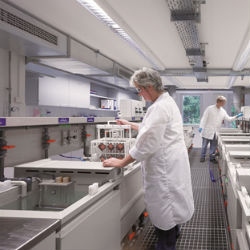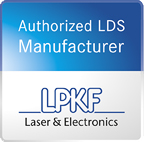LDS Process Steps

2-component injection molding and hot stamping are already used to manufacture MIDs (Molded Interconnect Device). Both of these methods are tied to product-specific tools to create a circuit on the component.
The associated high initial manufacturing costs considerably limit the efficiency of these methods for small production runs and design modifications. Prototyping shortly before series production is almost impossible.
Moreover, increasing miniaturization of the circuits on MID components leads to a considerable rise in tooling-up time and expense. The LDS (Laser Direct Structuring) method is a flexible and economic alternative. The LPKF-LDS process consists of the following steps:
Laser Activation
The laser-activatable materials have a special additive in the form of an organic metal complex, which is activated by a physico-chemical reaction induced by the focused laser beam. This cracks open the complex compounds in the doped plastic, and breaks off the metal atoms from the organic ligands. These act as nuclei for reductive copper coating.
In addition to activation, the laser also creates a microscopically irregular surface. The laser only ablates the polymer matrix, not the fillers added to the plastic. This creates microscopic pits and undercuts in which the copper is firmly anchored during metallization aiding in superior peal strength.

Metalization
The metallization part of the LPKF-LDS process begins with a cleaning step to remove laser debris. This is followed by additive build-up of the tracks with the help of current-free Cu baths.
An advantage of this procedure is that it dispenses with preliminary activation steps. If a greater thickness of copper is required, this is achieved using standard electroforming Cu baths. Application-specific coatings such as Ni, Au, Sn, Sn/Pb, AG, AG/PD, etc. are possible after the initial Cu base.
PDF download

